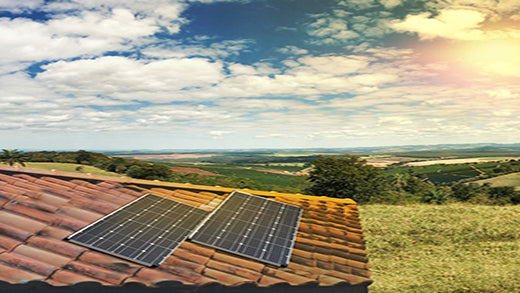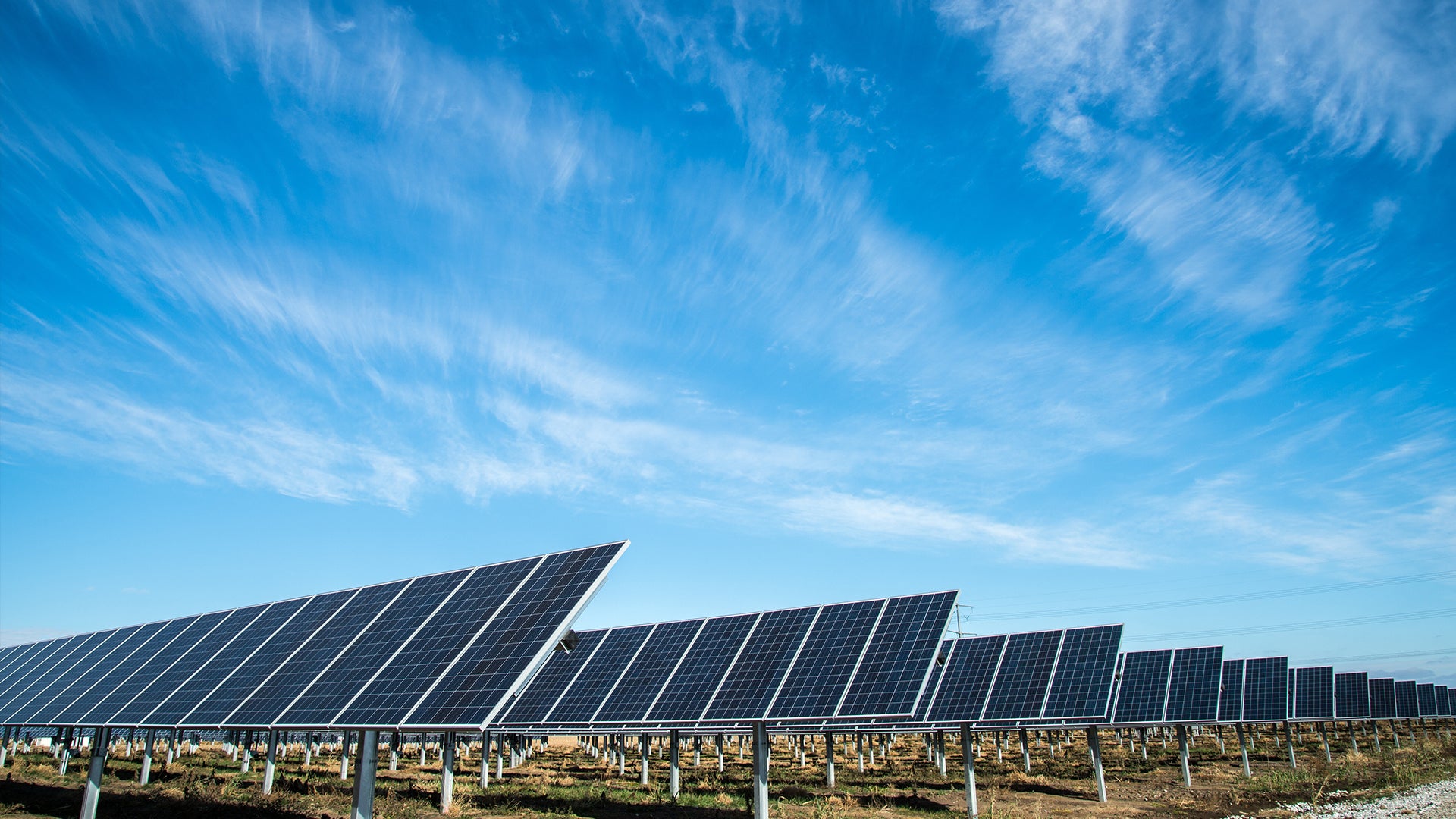A solar cell is a device that converts light energy directly into electrical energy by photoelectric effects or photochemical effects. To the photoelectric effect of the work of thin film solar cells for the mainstream,While the implementation of photochemical effects of solar cells is still in the embryonic stage.
A solar cell is a device that converts light energy directly into electrical energy by photoelectric effects or photochemical effects. To the photoelectric effect of the work of thin film solar cells for the mainstream, While the implementation of photochemical effects of solar cells is still in the embryonic stage.
Solar cells are also known as "solar chips" or "photovoltaic cells" Is a photoelectric semiconductor chip that uses solar light to generate electricity directly. As long as it is light to, Instantaneous output voltage and in the case of a loop generated current. In physics called solar photovoltaic。(Photovoltaic, photo light, voltaics volts, abbreviated as PV), referred to as photovoltaic.
principle:
The sun shines on the semiconductor p-n junction, The formation of a new hole - electronic pairs, Under the action of the built-in electric field in the p-n junction, The photogenerated holes flow to the p region,
The photo-generated electrons flow to the n- When the circuit is turned on, the current is generated. This is the photoelectric effect of the working principle of solar cells.
There are two ways of solar power generation, One is the light - heat - electric conversion method,
The other is the direct conversion of light - electricity.
Light - heat - electrical conversion
And large-scale use in the economy is very cost-effective, Still can not compete with ordinary thermal power plants or nuclear power plants.
Light-to-electrical direct conversion
Solar cell power generation is based on the specific material of the photoelectric properties made. Blackbody (such as the sun) radiated different wavelengths (corresponding to different frequencies) of electromagnetic waves, Such as infrared, ultraviolet, visible and so on. When these rays are irradiated on different conductors or semiconductors, Photon and conductor or semiconductor in the free electrons to produce current. Photon and conductor or semiconductor in the free electrons to produce current. The shorter the wavelength of the ray, The higher the frequency, The higher the energy, For example, the energy of ultraviolet light is much higher than infrared. But not all the wavelength of the energy of the ray can be converted into electrical energy, It is worth noting that the photoelectric effect has nothing to do with the strength of the ray, Only when the frequency reaches or exceeds the threshold that produces the photoelectric effect, Current can be generated. The maximum wavelength of the light capable of causing the photoelectric effect of the semiconductor to be correlated with the band gap of the semiconductor, For example, the band gap of crystalline silicon is about 1.155 eV at room temperature, So must be less than 1100nm wavelength of light can make crystalline silicon photoelectric effect. Solar cell power generation is a renewable way of environmental protection, Power generation process does not produce carbon dioxide and other greenhouse gases, Will not cause pollution to the environment. According to the production materials are divided into silicon-based semiconductor batteries, CdTe thin-film batteries, CIGS thin-film batteries, dye-sensitized thin-film batteries, organic materials such as batteries. Which is divided into single-crystal silicon cells, polycrystalline cells and amorphous silicon thin-film batteries. The most important parameters for solar cells are conversion efficiency, In the silicon-based solar cells developed by the laboratory, the efficiency of monocrystalline silicon cells was 25.0%, the efficiency of polysilicon cells was 20.4%, the efficiency of CIGS thin film was 19.6%, the efficiency of CdTe thin film was 16.7%, amorphous silicon (amorphous Silicon) thin-film battery efficiency of 10.1%
A solar cell is a device that converts light energy directly into electrical energy by photoelectric effects or photochemical effects. To the photoelectric effect of the work of thin film solar cells for the mainstream, While the implementation of photochemical effects of solar cells is still in the embryonic stage.
Solar cells are also known as "solar chips" or "photovoltaic cells" Is a photoelectric semiconductor chip that uses solar light to generate electricity directly. As long as it is light to, Instantaneous output voltage and in the case of a loop generated current. In physics called solar photovoltaic。(Photovoltaic, photo light, voltaics volts, abbreviated as PV), referred to as photovoltaic.
principle:
The sun shines on the semiconductor p-n junction, The formation of a new hole - electronic pairs, Under the action of the built-in electric field in the p-n junction, The photogenerated holes flow to the p region,
The photo-generated electrons flow to the n- When the circuit is turned on, the current is generated. This is the photoelectric effect of the working principle of solar cells.
There are two ways of solar power generation, One is the light - heat - electric conversion method,
The other is the direct conversion of light - electricity.
Light - heat - electrical conversion
- The light-to-heat conversion method utilizes solar energy generated by solar radiation to generate electricity, Generally by the solar collector will absorb the heat into the refrigerant refrigerant, And then drive the turbine power generation. The previous process is the light - heat transfer process; The latter process is a thermo-electrical conversion process, And the same as ordinary thermal power. The shortcomings of solar thermal power generation are inefficient and costly, It is estimated that its investment at least 5 to 10 times more expensive than ordinary thermal power plants.
And large-scale use in the economy is very cost-effective, Still can not compete with ordinary thermal power plants or nuclear power plants.
Light-to-electrical direct conversion
Solar cell power generation is based on the specific material of the photoelectric properties made. Blackbody (such as the sun) radiated different wavelengths (corresponding to different frequencies) of electromagnetic waves, Such as infrared, ultraviolet, visible and so on. When these rays are irradiated on different conductors or semiconductors, Photon and conductor or semiconductor in the free electrons to produce current. Photon and conductor or semiconductor in the free electrons to produce current. The shorter the wavelength of the ray, The higher the frequency, The higher the energy, For example, the energy of ultraviolet light is much higher than infrared. But not all the wavelength of the energy of the ray can be converted into electrical energy, It is worth noting that the photoelectric effect has nothing to do with the strength of the ray, Only when the frequency reaches or exceeds the threshold that produces the photoelectric effect, Current can be generated. The maximum wavelength of the light capable of causing the photoelectric effect of the semiconductor to be correlated with the band gap of the semiconductor, For example, the band gap of crystalline silicon is about 1.155 eV at room temperature, So must be less than 1100nm wavelength of light can make crystalline silicon photoelectric effect. Solar cell power generation is a renewable way of environmental protection, Power generation process does not produce carbon dioxide and other greenhouse gases, Will not cause pollution to the environment. According to the production materials are divided into silicon-based semiconductor batteries, CdTe thin-film batteries, CIGS thin-film batteries, dye-sensitized thin-film batteries, organic materials such as batteries. Which is divided into single-crystal silicon cells, polycrystalline cells and amorphous silicon thin-film batteries. The most important parameters for solar cells are conversion efficiency, In the silicon-based solar cells developed by the laboratory, the efficiency of monocrystalline silicon cells was 25.0%, the efficiency of polysilicon cells was 20.4%, the efficiency of CIGS thin film was 19.6%, the efficiency of CdTe thin film was 16.7%, amorphous silicon (amorphous Silicon) thin-film battery efficiency of 10.1%



